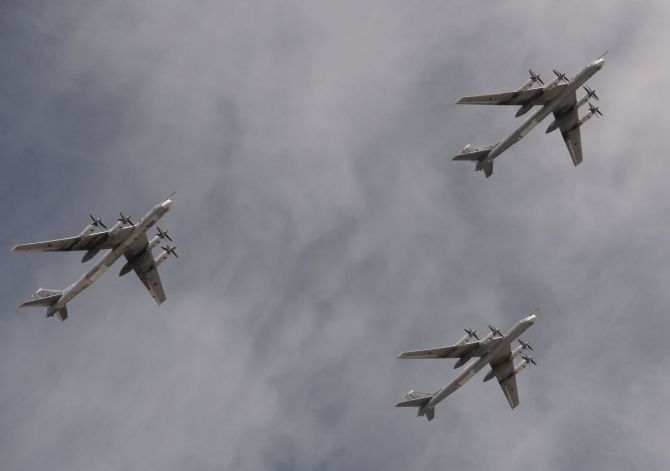Introduction
While Washington, D.C. was busy with political news yesterday, a significant and potentially provocative event unfolded on the opposite coast of the United States. The US military was compelled to scramble jets in response to a joint air exercise conducted by China and Russia near Alaska, involving a fleet of nuclear-capable bombers.
The Incident
The confrontation began when four nuclear-capable bombers—two Russian Tu-95s and two Chinese H-6s—entered America’s Air Defense Identification Zone (ADIZ). Accompanying these bombers were Su-30, Su-35, and SMS aircraft, indicating a coordinated training exercise between the Russian and Chinese air forces. A video released by the Russian Defense Ministry showed one of the Russian bombers being refueled mid-air, a common practice for long-range missions.
NORAD’s Reaction
The North American Aerospace Defense Command (NORAD), tasked with securing the airspace around Alaska, detected the foreign aircraft as they entered the ADIZ. While entering the ADIZ is not illegal, the US expects notification and responds by intercepting such flights. NORAD scrambled F-16s and F-35s from the US and F-18s from Canada to escort the Russian and Chinese bombers. The footage released by Russia showed the Western aircraft flying alongside the foreign planes, maintaining a visible presence.
NORAD’s Statement
NORAD released a statement clarifying that the Russian and Chinese aircraft remained in international airspace and did not enter American or Canadian sovereign airspace. The command reassured that this activity was not considered a threat and emphasized that NORAD would continue to monitor such operations, adopting a stance of “presence with presence” to show that the US was actively engaged.
Historical Context
This incident reflects a pattern of periodic aerial maneuvers by both Russia and the US, with Russia having conducted similar operations near the Alaskan ADIZ in May and February. These types of encounters are part of ongoing military posturing between the two nations. However, the involvement of China in this latest exercise represents a new and significant development.
China’s Response
China attempted to downplay the incident, framing it as a routine training exercise in line with international norms. Beijing’s official position was that the deployment of nuclear-capable bombers was not aimed at any specific country and was a standard part of their military activities.
Broader Implications
The inclusion of Chinese bombers in this joint exercise with Russia marks a notable escalation in the strategic rivalry between the US and these two nations. It raises questions about the future frequency and scale of such joint operations. The US’s response to this provocation and its potential policy adjustments will be closely monitored.
Conclusion
The joint air drills by China and Russia near Alaska underscore the growing geopolitical tensions and strategic competition in the Pacific and Arctic regions. As both nations increase their military activities in close proximity to US airspace, the next steps taken by the US will be critical in shaping future interactions. The incident highlights the ongoing strategic rivalry and sets the stage for continued high-stakes maneuvering in these critical regions.





